Sunaofe Moveable Gaming Standing Desk with Stand: Challenger — Honest Review & Setup Guide
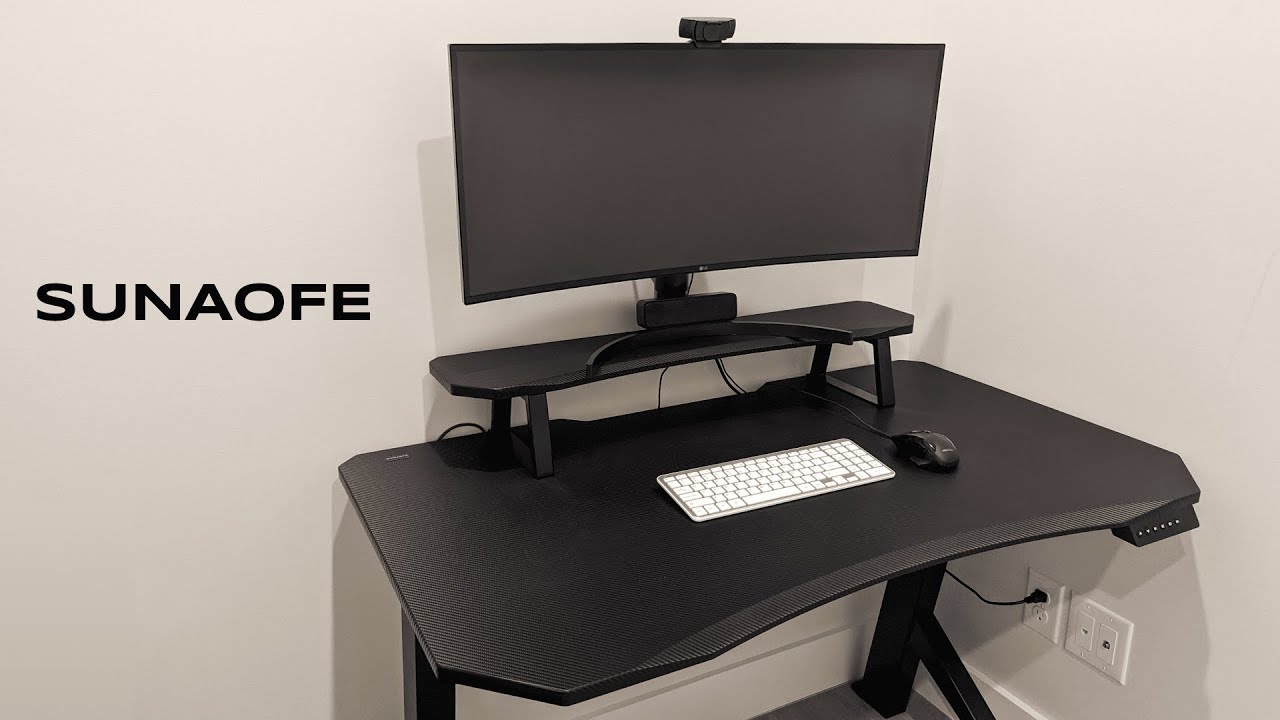
I’m Kova Tech, and I want to walk you through the Sunaofe Challenger moveable gaming standing desk — what it does, why I like it, and how it can change the way you game and work. I put this desk through typical gaming and productivity routines to see how it performs in real life, and in this article I’ll break down its standout features, practical tips for setup, and answers to common questions so you can decide whether it’s the right fit for your space.
Table of Contents
- Why a standing desk for gaming? My starting point
- Convenience & mobility: retracting casters that actually work
- Design & stability: oblique legs, not ordinary T-legs
- Comfort & surface: carbon texture and ergonomic arc
- Space-saving features and tidy cable management
- Height control: LED digital display and presets
- Practical setup and customization tips
- Who should consider the Sunaofe Challenger?
- Maintenance and long-term care
- FAQ
- Final thoughts
Why a standing desk for gaming? My starting point
Let’s start with the most important reason I reached for the Challenger: focus. Long marathon gaming sessions and extended workdays can make you zone out, slump in your chair, or feel sluggish. Standing frequently during intense play or deep work gives you small bursts of physical engagement that keep your mind sharp and energy levels up. Personally, switching between sitting and standing has noticeably improved my alertness during long streams or editing sessions.
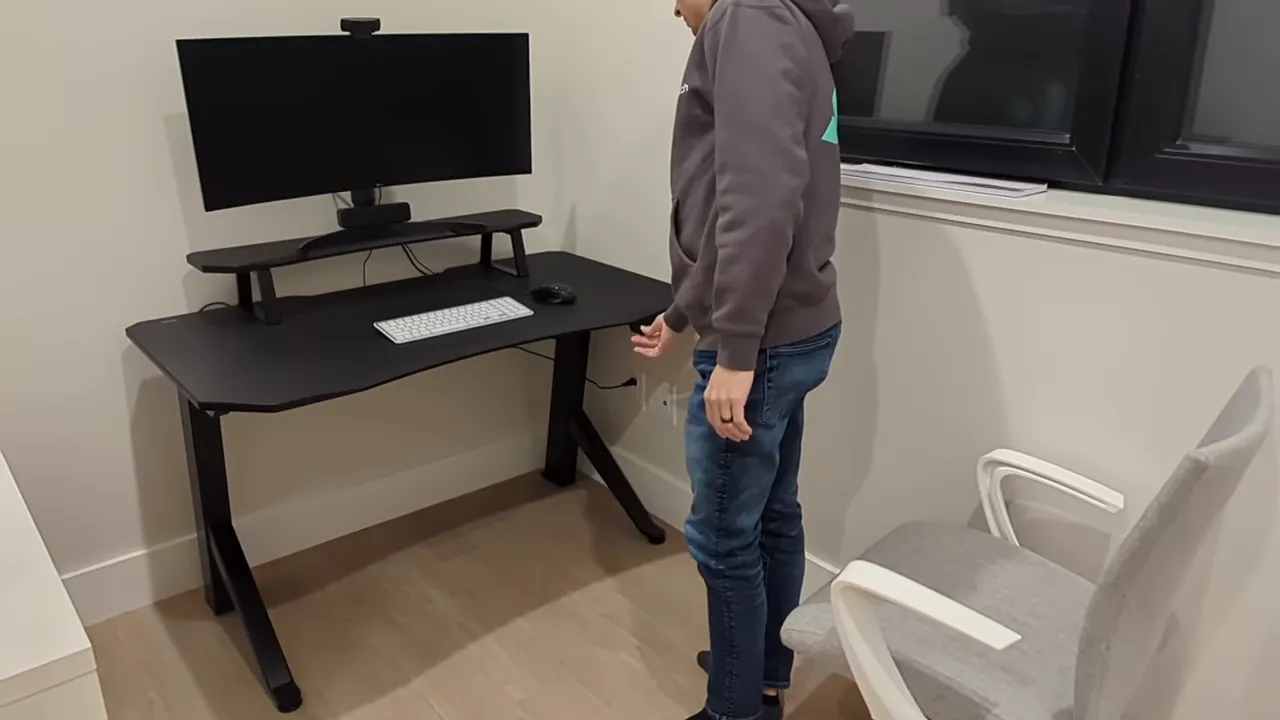
That’s why the standing capability is a headline feature. It’s not about forcing you to stand all day; it’s about giving you the freedom to change posture quickly and smoothly so you stay productive and comfortable.
Convenience & mobility: retracting casters that actually work
One of the features I immediately appreciated was the built-in retracting casters. This desk is surprisingly easy to move around when you need to rearrange your room or want to switch studios. Roll it to a new spot, then raise the desk — the casters automatically tuck away and lock the desk solidly in place. No crawling under the desk to flip tiny locks, no balancing while you try to raise the surface.
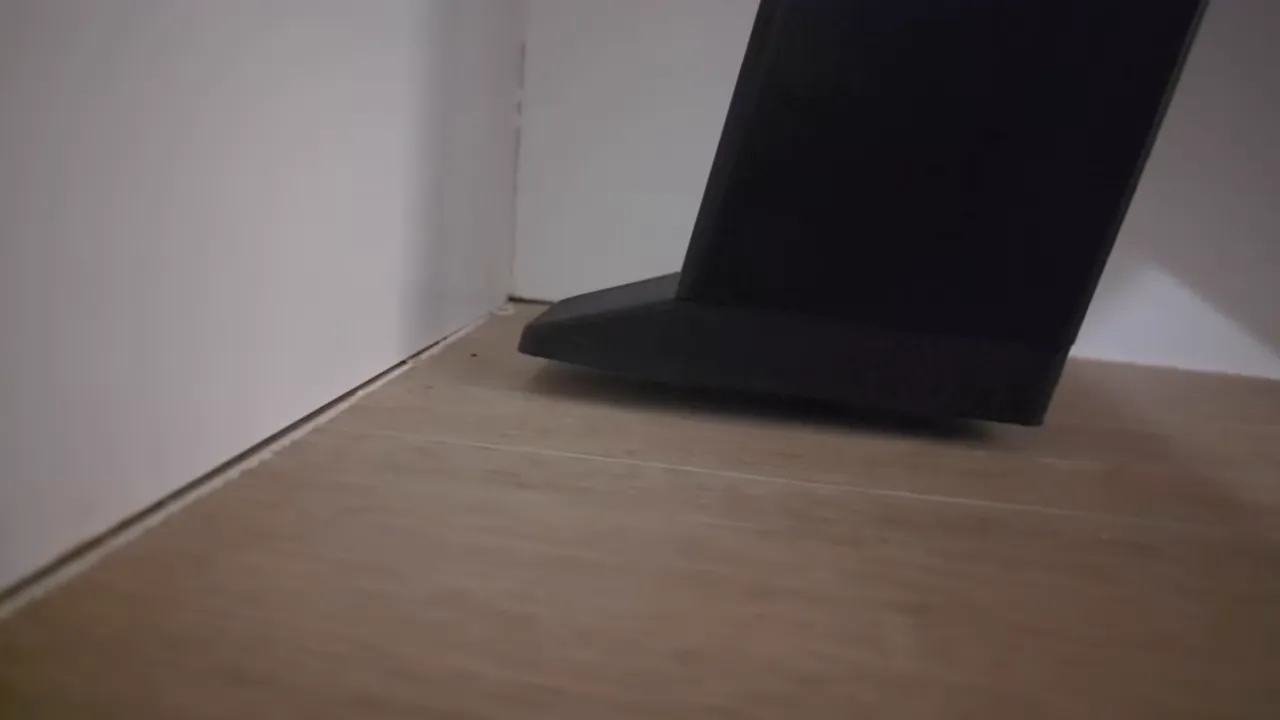
That dual-mode convenience (move vs. locked) makes the desk feel versatile. If you’re someone who reconfigures your battlestation a lot — or you need to shift between different floor surfaces — this is a small hardware detail that makes a big difference in everyday usability.
Design & stability: oblique legs, not ordinary T-legs
Instead of the standard T-leg or straight-leg designs you see on many desks, the Challenger uses an oblique angle leg structure. Aside from looking slick and modern, this design contributes to a very stable platform — even when the desk is fully extended. During test setups with dual monitors and peripherals, I didn’t notice any wobble that would throw off mouse precision or make the surface feel unsafe.
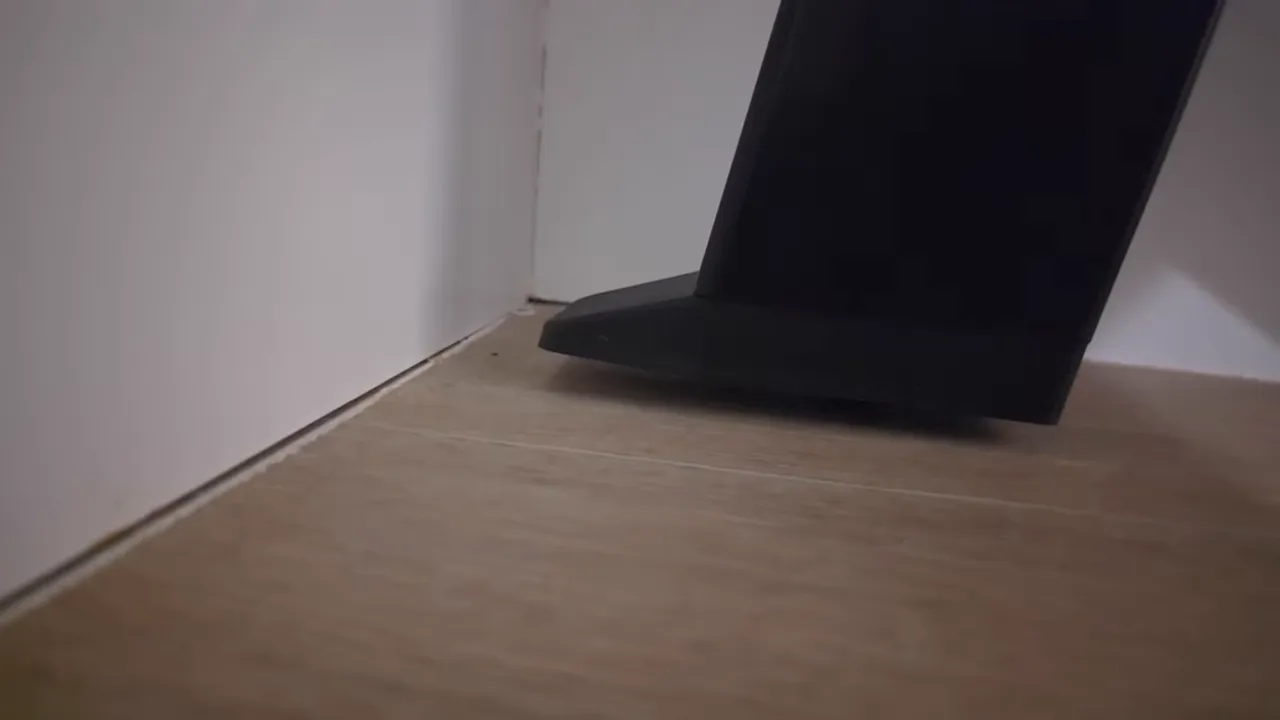
Sturdiness matters for gaming and precision work. Whether you’re swinging a mouse in an FPS match or rolling a heavy keyboard across the surface, a solid base reduces distractions and improves confidence in your setup.
Comfort & surface: carbon texture and ergonomic arc
The desktop itself isn’t just about looks. The carbon texture finish gives a premium feel, and the surface is designed with an ergonomic arc so you naturally sit or stand closer to your monitors and peripherals. That small curvature helps reduce reach and keeps your arms at a comfortable angle for long sessions.
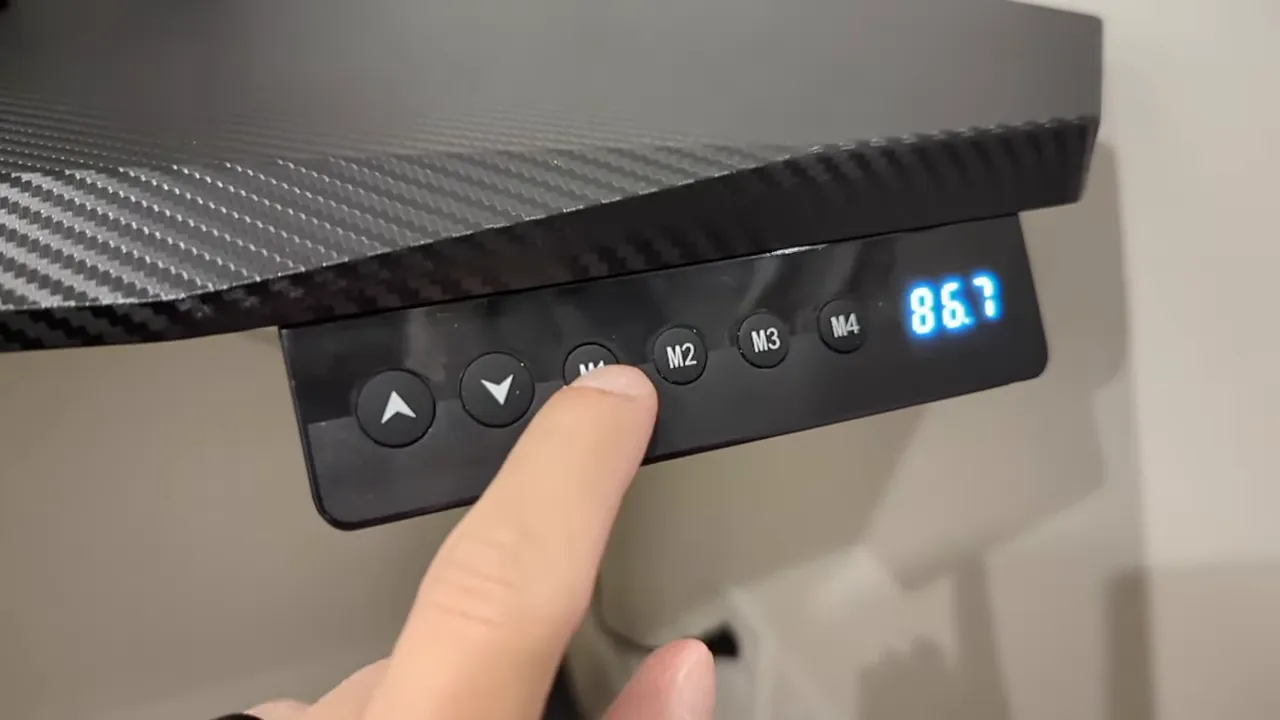
The finish also makes cleanup easier — smudges and spills wipe off quickly, and the material resists light wear. Importantly, the desktop has certifications that back up the quality claims, so you’re not just buying hype; there’s tested durability behind the design.
Space-saving features and tidy cable management
The Challenger includes several practical accessories that keep a battlestation tidy and functional:
- Built-in cable management routing to hide power bricks and cables.
- Dedicated headphone hook to keep headsets off the surface and within reach.
- Integrated cup holder so you don’t risk spills across your keyboard.
- Mounting options for a monitor arm or stand, letting you free up desk surface and get ergonomic monitor placement.

These are the kinds of user-friendly touches that matter once your setup starts to accumulate gear. A clean desk reduces cognitive clutter — it’s easier to concentrate when your workspace isn’t a tangle of wires and peripherals.
Height control: LED digital display and presets
Adjusting the Challenger is intuitive thanks to an LED digital display and preset buttons. The preset buttons let you store preferred heights (for example: sitting, standing, and a custom streaming height) and switch instantly without guessing. This is far superior to fiddly touch sliders or manual crank systems — it’s quick, precise, and repeatable.
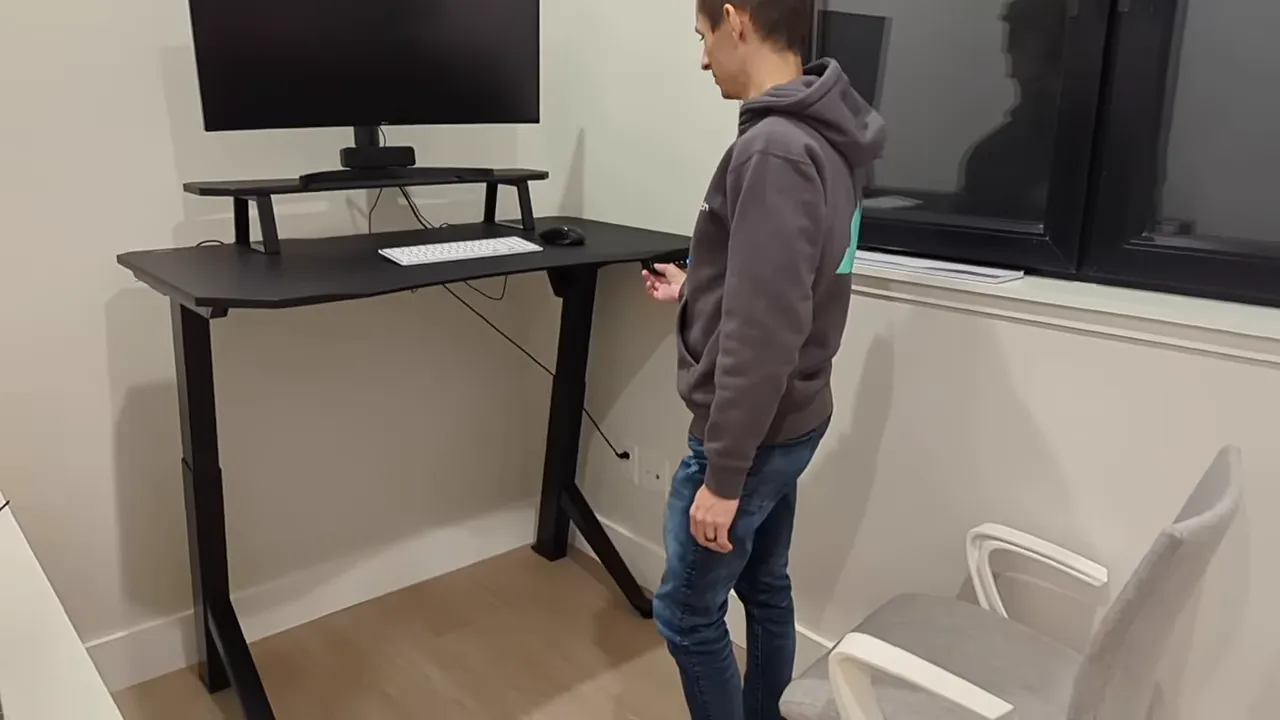
The absence of touch-sensitive keys is deliberate: physical preset buttons deliver consistency and reduce accidental inputs. When you’re in the flow and need the desk to move to a trusted height, the controller responds predictably.
Practical setup and customization tips
Here are some practical tips I’ve found helpful when setting up the Challenger for a gaming or work environment:
- Position your monitor so the top third of the screen is at eye level while standing — this minimizes neck strain and keeps your posture neutral.
- Use the monitor arm option if you have limited desk depth; it frees up space and gives you precise display positioning.
- Save at least three presets: one for seated work, one for standing work, and one custom for relaxed browsing or streaming.
- Route cables through the built-in channels as you plug things in; it’s much easier than trying to tidy them later.
- Place heavier gear nearer the center of the desktop to reduce torque and maintain stability, especially at higher elevations.
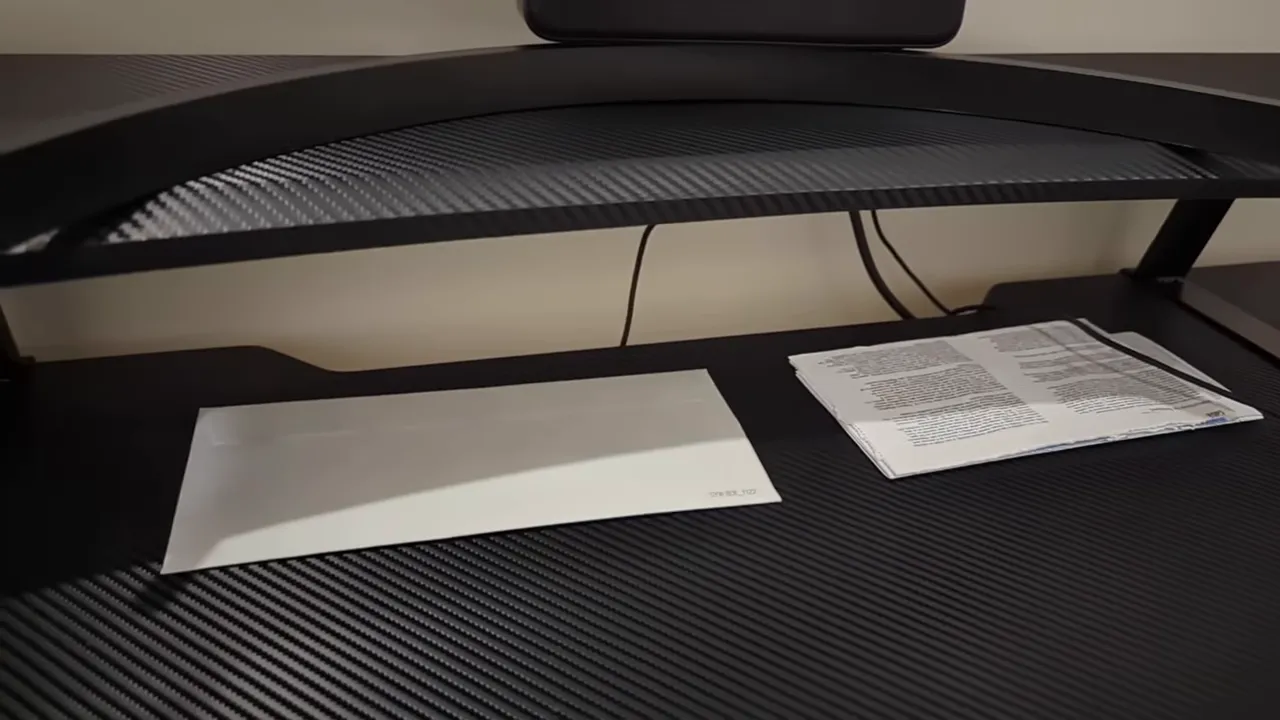
With these steps, you’ll get a cleaner, more ergonomic station that supports both peak performance and comfort.
Who should consider the Sunaofe Challenger?
If you’re a gamer, streamer, content creator, or professional who spends long hours at a desk, the Challenger is worth considering. It’s especially suitable for those who value flexibility (mobile yet stable), precise height control, and an organized workspace. Smaller rooms and multi-use spaces benefit from the desk’s mobility and compact organization features.
On the other hand, if you need extreme heavy-load capacity (for server racks or multiple heavy audio monitors), you’ll want to check load ratings and confirm they meet your needs. For typical gaming and creative work setups, the Challenger strikes a solid balance between form and function.
Maintenance and long-term care
Keeping the desk in great shape is straightforward. Wipe the carbon surface with a soft cloth and mild cleaner. Keep the caster tracks clear of dust and debris — this ensures smooth movement and proper retraction. Periodically check bolts and the underside bracket connections; a quick tighten after a month of use can prevent minor looseness later on.
If you use a monitor arm, confirm the VESA mount screws remain snug and that the arm’s tension settings are adjusted for your monitor’s weight. These small checks preserve the desk’s performance and extend longevity.
FAQ
Q: How smooth is the height transition?
A: The Challenger uses an electric lift mechanism with an LED controller, and transitions are smooth and quick. The preset buttons allow instant recalls to stored heights — it’s much less jerky than low-end motors and avoids the slow-rise feel of manual systems.
Q: Are the casters lockable and reliable?
A: Yes — the casters deploy for movement and retract automatically when the desk is raised. When tucked, the desk feels locked and steady. For uneven floors, I recommend using a small leveling foot or rug to ensure consistent contact.
Q: Can I mount a heavy ultrawide monitor on the desk?
A: Many users successfully mount ultrawide screens using a compatible monitor arm. Always check the monitor arm’s weight rating and the VESA compatibility. Placing the monitor’s mass near the center of the desk and adjusting arm tension properly is key to maintaining stability.
Q: Does the desk require assembly?
A: Yes, the desk ships disassembled and requires assembly. The process is typical for adjustable desks and uses standard tools. I found it straightforward, and the instructions are clear — allocate an hour or two depending on your pace.
Q: Is it noisy when adjusting height?
A: The motor produces a low hum while raising or lowering, comparable to most electric standing desks. It’s not silent, but it’s not disruptive for gaming or calls. If quiet operation is a priority, test in-store or compare motor specs before purchasing.
Final thoughts
The Sunaofe Challenger standing gaming desk earns its place in a modern setup by delivering thoughtful features that focus on comfort, convenience, and reliability. From automatic retracting casters and an oblique leg design to an ergonomic carbon-textured desktop and programmable height presets, this desk blends practical engineering with gamer-friendly touches.
If you want a desk that supports long sessions without sacrificing mobility or organization, the Challenger is a solid contender. I’ve used it across gaming, streaming, and content creation workflows and found it consistently helpful in keeping focus and freeing up desk real estate.
Keep it real, keep your setup intentional, and remember — small improvements to ergonomics and organization add up to big gains in comfort and performance.